Gardening is more than just a delightful pastime; it’s an opportunity to cultivate beauty and sustenance right at home. In a world where costs can quickly add up, discovering ways to nurture your green space without overspending is not only appealing but essential for many gardeners. Whether you are just starting to dabble in planting or have years of experience under your belt, there are always fresh, budget-friendly techniques to explore. This article is designed to inspire both novice and seasoned gardeners with innovative hacks that promise to transform your garden without emptying your wallet.
The joy of gardening should be accessible to everyone, regardless of budget constraints. By embracing resourceful practices, you can create a thriving, vibrant garden that reflects your personal touch and creativity. From repurposing household items to concocting homemade fertilizers, this guide will equip you with practical tips that are as gentle on your finances as they are on the environment. As you read on, you’ll discover clever strategies to maximize your resources and enhance your gardening experience, ensuring your green thumb is both effective and economical.
There’s a special satisfaction that comes from knowing your garden flourishes through ingenuity and smart planning. By the end of this article, you’ll be armed with the knowledge to turn everyday items into valuable gardening tools and learn techniques that stretch the value of every dollar spent. Let’s embark on this journey together, where each tip and trick will not only save you money but also deepen your connection to the soil and the plants you nurture. Welcome to a world where gardening becomes an art of creativity and sustainability, accessible to all who wish to grow.
Reuse Household Items as Planters
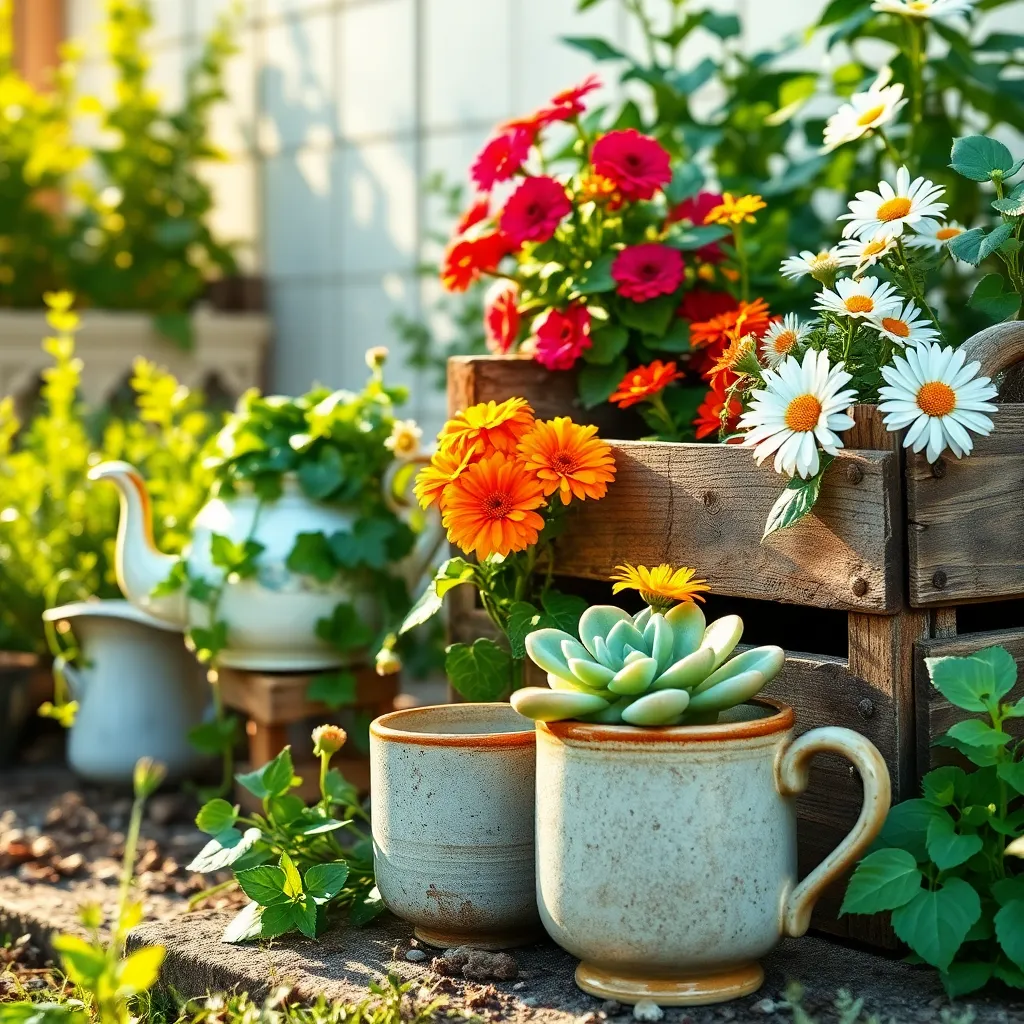
Transform everyday household items into unique planters to add character to your garden. Old teapots, worn-out boots, and even broken colanders can be repurposed, offering a whimsical touch to your plant display.
To start, ensure that your chosen item has proper drainage, which is crucial for preventing root rot. If it doesn’t already have holes, carefully drill a few into the bottom or use a liner that allows for water flow.
Consider the size and depth of your container when selecting plants, as shallow containers like muffin tins are perfect for succulents. These plants require well-draining soil and minimal watering, making them ideal for quirky, smaller-scale setups.
For more substantial items like old wooden crates or baskets, consider growing herbs like basil or mint. These plants thrive in rich, loamy soil and need regular watering, so ensure you check the moisture level frequently by touching the soil.
Create DIY Compost from Scraps
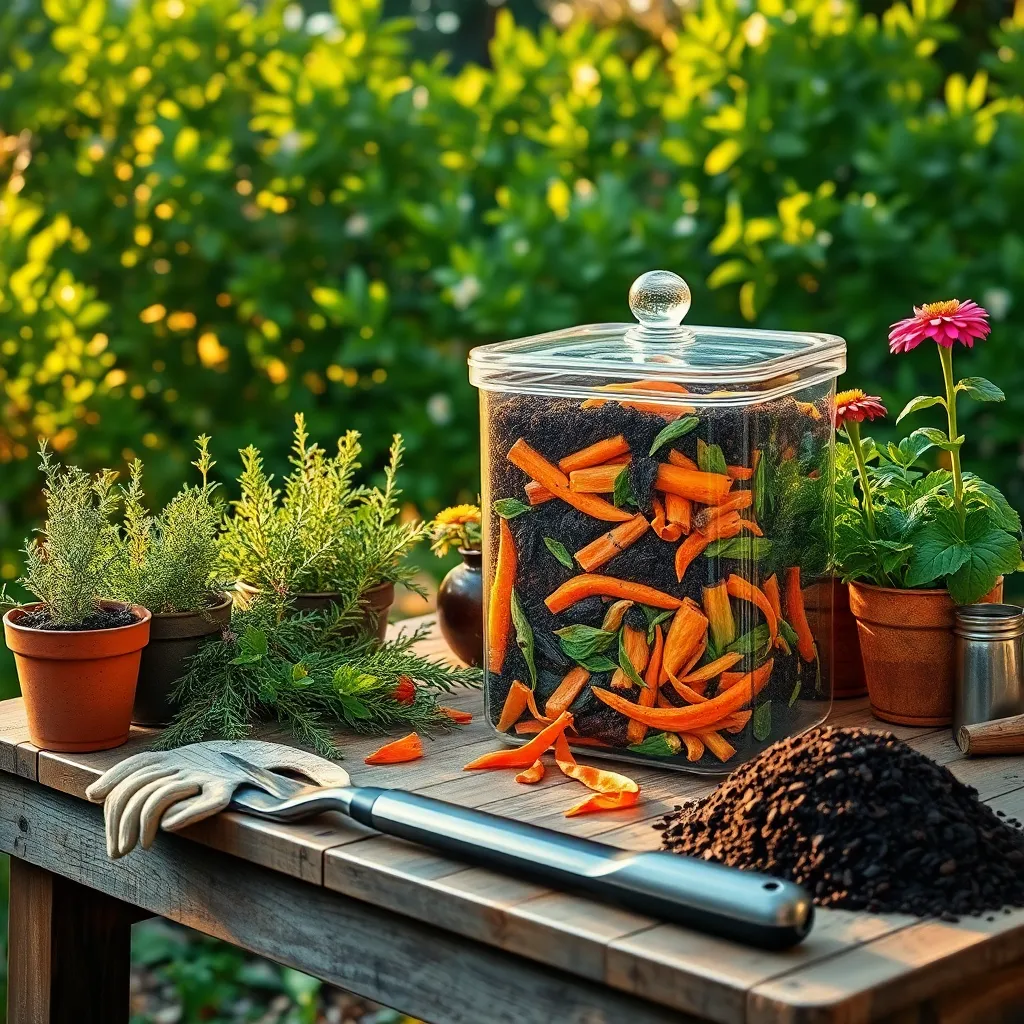
Transforming kitchen scraps into rich compost is an easy and budget-friendly way to enhance your garden. All you need is a small corner in your backyard or a compost bin to start turning waste into a gardener’s gold.
Begin by collecting vegetable peels, fruit scraps, coffee grounds, and eggshells. Avoid adding meat, dairy, or oily foods, as these can attract pests and create unpleasant odors.
Layer your scraps with brown materials like dried leaves, shredded newspaper, or small twigs. This balance of “greens” and “browns” creates a nutrient-rich environment that speeds up decomposition.
Turn the compost pile every week using a garden fork to aerate it, which accelerates the composting process. Keep the compost slightly moist; it should feel like a damp sponge to ensure microorganisms can thrive.
Once the compost resembles dark, crumbly soil and has an earthy smell, it’s ready to use. Spread a layer around your plants to improve soil structure, retain moisture, and add essential nutrients.
For advanced gardeners, consider adding crushed eggshells to your compost for an extra calcium boost. This can be particularly beneficial for tomatoes and peppers, which are prone to blossom-end rot due to calcium deficiency.
Collect Rainwater for Irrigation
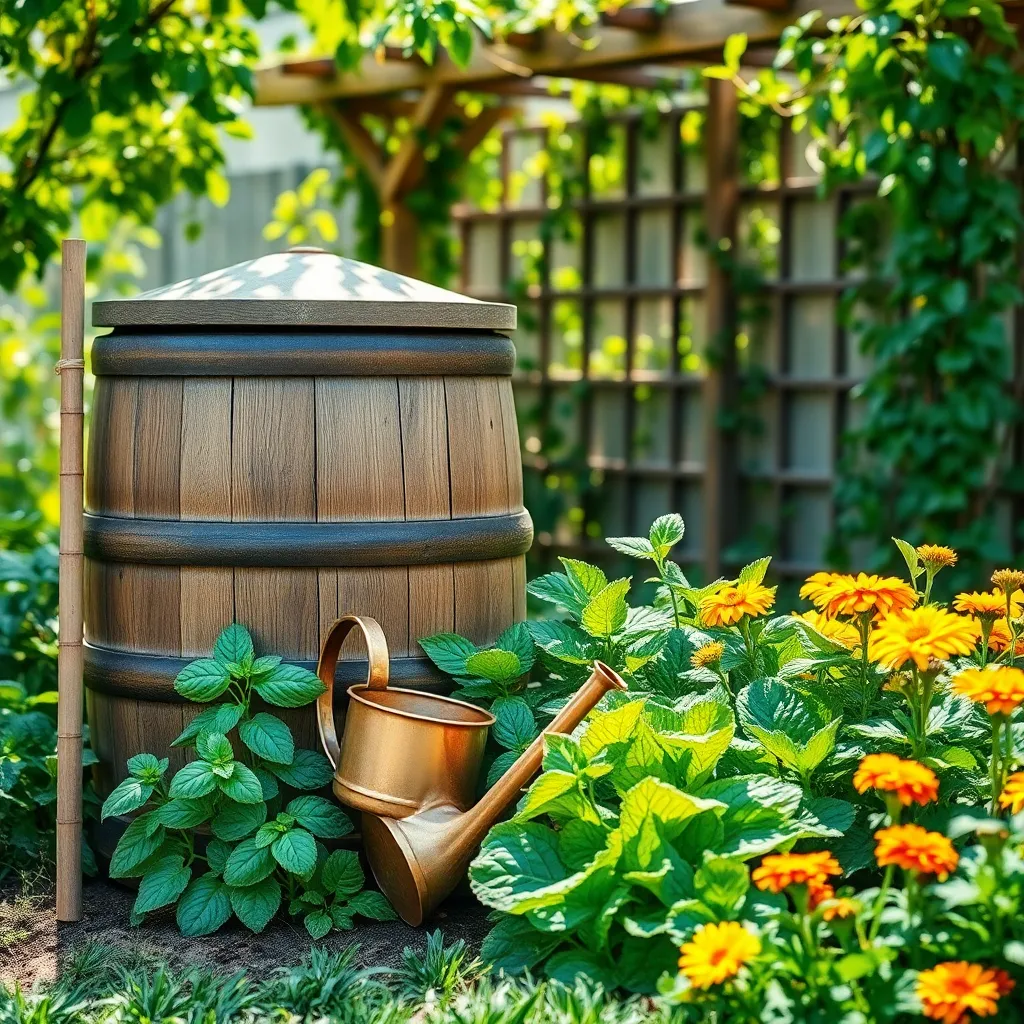
Collecting rainwater for irrigation is a simple and cost-effective way to keep your garden lush and healthy. By using a rain barrel, you can make use of natural resources while reducing your water bills.
Place your rain barrel under a downspout to capture runoff from your roof. Ensure the barrel has a lid to prevent debris and insects from contaminating the water.
Regularly check your rain barrel for leaks and screen for mosquitoes to keep your system in top condition. Use the collected rainwater to water your plants early in the morning or late in the afternoon to minimize evaporation.
For beginners, it’s important to know that rainwater is naturally soft and free of chlorine, which can be beneficial for your plants. More advanced gardeners can consider installing a drip irrigation system connected to their rain barrel for efficient water delivery directly to plant roots.
Propagate Plants from Cuttings
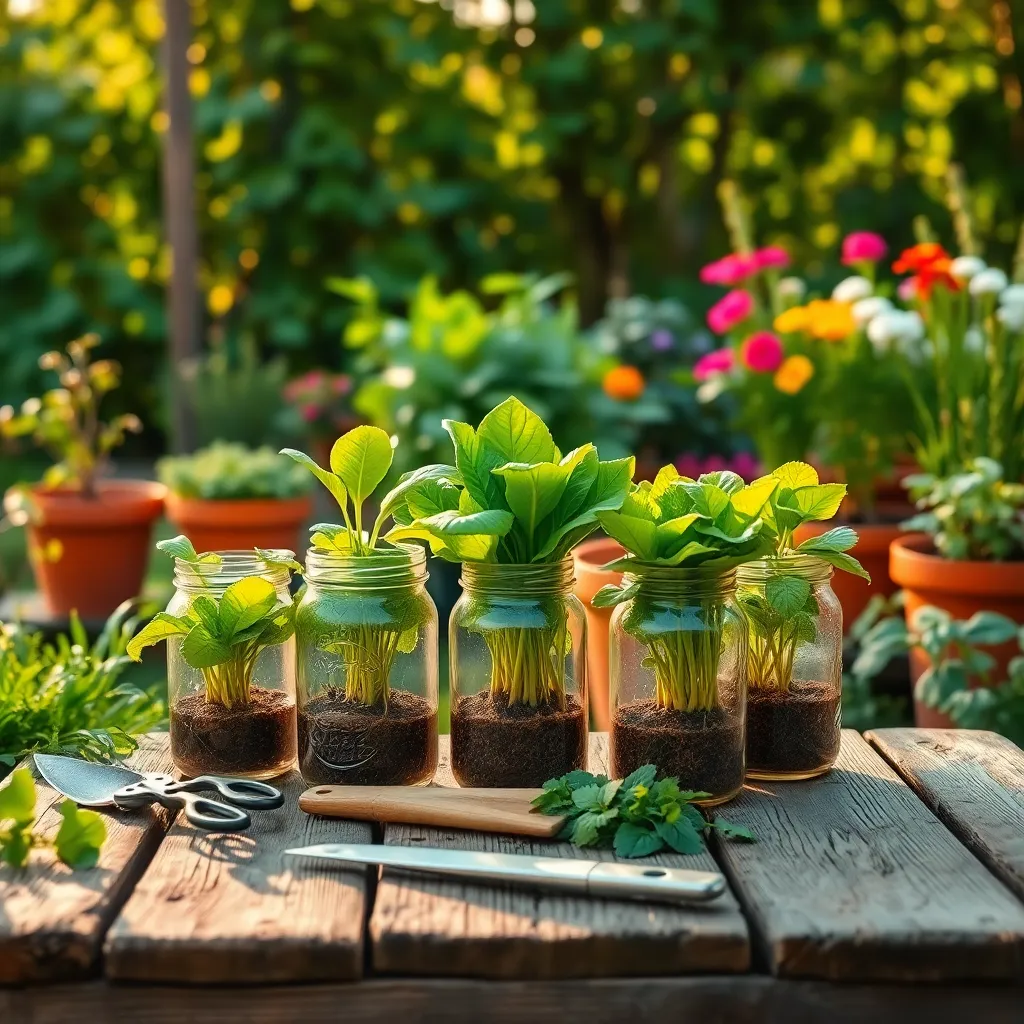
One of the most cost-effective ways to expand your garden is by propagating plants from cuttings. This method allows you to clone your favorite plants without spending a dime, making it an ideal solution for thrifty gardeners.
Start by selecting healthy, non-flowering stems from the plant you wish to propagate. Use a clean, sharp knife or scissors to make a cutting just below a node, about 4-6 inches long for most plants.
Remove any leaves from the lower half of the cutting to prevent rot and ensure the plant focuses its energy on root development. Dip the cut end in a rooting hormone powder to accelerate root growth, although this step is optional and not always necessary.
Place the cutting in a pot filled with a well-draining mix, such as a blend of half perlite and half peat moss. Keep the soil moist but not waterlogged, with watering once every few days, and position the pot in a warm, bright area without direct sunlight.
For more advanced gardeners, consider using a propagation tray with a humidity dome to maintain the ideal moisture levels. This technique is particularly beneficial for cuttings that require more time to establish roots.
Monitor the cuttings closely for signs of new growth, which generally indicates successful rooting. Once roots have developed, usually within a few weeks, gradually acclimate your new plants to outdoor conditions before transplanting them into your garden.
Make Natural Pest Repellents
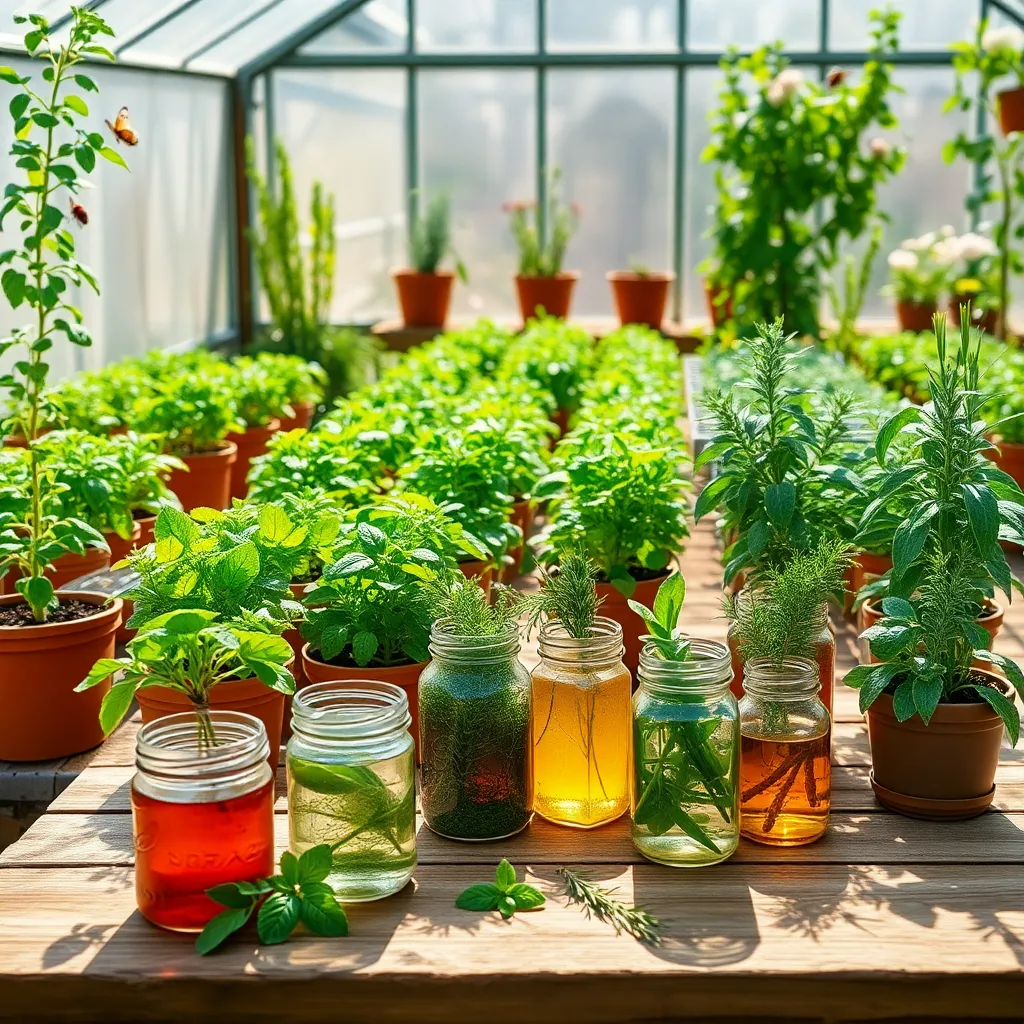
Creating natural pest repellents is an eco-friendly way to protect your garden without harsh chemicals. You can make a simple spray using ingredients like garlic, hot peppers, and dish soap, which are known for their pest-deterring properties.
To make a basic garlic spray, blend a few cloves of garlic with water, strain, and add a couple of drops of dish soap. This mixture can be sprayed directly on plants every few days to repel a variety of insects, such as aphids and caterpillars.
For a more potent solution, try incorporating hot peppers into your homemade repellent. Blend hot peppers with water and strain the solution, then mix in a touch of dish soap to help it adhere to plant leaves.
Always test any new spray on a small section of a plant before applying it widely, as some plants may be sensitive. It’s important to apply these natural sprays in the evening or early morning to prevent leaf burn from the sun.
Conclusion: Growing Success with These Plants
In wrapping up our exploration of budget-friendly garden hacks, we’ve uncovered five key relationship concepts that can transform your outdoor space without breaking the bank. First, understanding the value of teamwork in planning your garden fosters collaboration just as it does in any relationship. Second, maintaining open communication when sharing responsibilities ensures harmony and balance. Third, practicing patience allows your garden—and your relationships—to flourish over time. Fourth, embracing creativity with upcycled materials can add unique charm, reminding us that relationships thrive on innovation. Lastly, celebrating small wins, like sprouting seeds or blossoming flowers, reinforces a positive outlook in both gardening and personal bonds.
As an immediate next step, try discussing your garden plans with a partner or friend, turning it into a shared project that strengthens your connection.
Remember to bookmark this article as a handy guide for future reference. It serves as a reminder that nurturing both your garden and your relationships with care and creativity can lead to lasting success. As you embrace these principles, you’re planting seeds of growth and connection that promise a flourishing future. Here’s to a thriving garden and even more nurturing relationships ahead!
